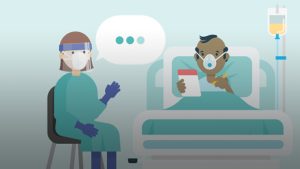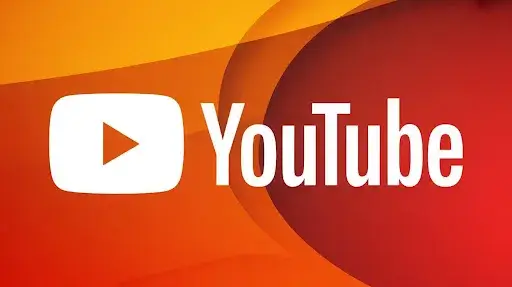Studies show that people remember 65% of the information presented in a visual format, compared to just 10% with text alone.
That means you can use easy-to-understand visuals to communicate complex facts and arguments more effectively in a trial.
A jury faced with hours of testimony about a complicated case will struggle to retain all the information. But if you present them with a simple, clear timeline—an approach explored in our take on using visuals to strengthen courtroom arguments—those events become easy to follow and remember, improving your chances of a favorable verdict.
This blog talks about everything you should know about courtroom graphics, their role in a legal strategy, and how you can use them to drive a positive outcome.
What are Courtroom Graphics?
Courtroom graphics, such as diagrams, charts, timelines, and animations, are digital images or multimedia that break down intricate details of a case’s information for judges and juries.
Courtroom graphics give weight to supporting arguments by making abstract concepts easy to understand. A well-crafted timeline can show the sequence of events, making it easier for the jury to follow along—something we’ve also explored in our breakdown of how visual aids elevate trial presentations.
In cases, complex arguments involving patents, medical malpractice, or environmental law, 3D courtroom graphics can also help present the points effectively.
Types of Courtroom Graphics
There are five main types of courtroom graphics:
Medical Legal Graphics
Detailed and factual medical animations are commonly used in personal injury and medical malpractice cases. The accompanying visuals for complex medical information simplify the explanation of injuries, surgical procedures, and medical conditions. It is crafted so that jurors understand the essential points that aid a favorable verdict.
Forensic Animation Graphics
These courtroom visuals are often used in recreating accidents or assaults. They depict exactly what occurs at the event. Forensic animation graphics often accompany forensic graphics, such as vehicle speed, impact angles, and environmental conditions. Helping the jury understand what happened in a matter of minutes or under complex circumstances.
Accident Recreation Graphics
These trial graphics visualize the circumstances surrounding an accident by detailing the sequence of events that led to the accident. Accident reconstruction trial graphics encompass the representation of the scene, trajectories, and points of impact through diagrams. This is typically done using 2D and 3D visuals to explain the dynamics of an accident. This way, jurors can understand the ‘why’ and the ‘how’ behind the occurrence.
Mechanical Diagram Graphics
These trial graphics illustrate the mechanical process or systems that can help explain the technical aspects of a case. They are often used in product liability or engineering disputes. For instance, a mechanical diagram might show a machine malfunction or how a product was defectively designed. These courtroom animations allow jurors to follow the testimony with ease, even without an engineering background.
5. Timeline Graphics
Timelines help jurors remember and understand events in chronological order. Graphics with key timelines help retain vital information. These timelines can draw attention to discrepancies in testimonies or highlight pivotal moments in the case.
Key Elements of Effective Trial Graphics That Will Win You the Case
Let’s now go over some key elements that can make your courtroom animations effective.
Relevance
Make sure every trial graphic directly supports your legal argument. Avoid including distracting or irrelevant information that doesn’t help build your case. Focusing exclusively on what is most pertinent will help keep the jury interested.
Simplicity
Courtroom visuals should utilize direct, as well as basic, language. Graphics that go overboard with detail can result in more confusion than clarification. Simplifying information does not equate to dumbing it down. Jurors have to process a lot of information, and plain graphics help them put all the pieces together. Accessible, clear graphics serve all jurors, regardless of their education.
Visual Hierarchy
Focus on the highlights of your graphics. Use size or color, or position to highlight the most critical parts first. Emphasizing key points enables jurors to recall the most important components of the legal argument. This visual hierarchy is effective in directing the jury where you need them to focus.
Consistency
All your trial graphics have to follow the same design style. Doing this builds a single coherent narrative for the jurors to follow. Professionalism and reliability stem from consistent fonts, colors, and layout—something all jurors appreciate.
Common Pitfalls of Courtroom Animations and How to Avoid Them
These are some common pitfalls that can make your courtroom animation weak.
1. Avoid Overloading Graphics
One of the most common mistakes to avoid when animating courtroom graphics or creating a courtroom animation is including too much information or clutter in illustrations. Detailed animations that include too much information can distract the jury from the main issues.
Instead, aim for simplicity. You should concentrate on the parts of your case that defend your claims and provide value to your arguments. For example, when illustrating timelines, include the most relevant milestones that support your claim.
This will greatly enhance the jury’s ability to understand and remember the information presented to them. Do not forget that using visual aids requires minimalism for maximum impact.
2. Maintain Consistent Design
Non-uniform elements of design tend to be disorganized, and inconsistency in trial graphics portrays a lack of professionalism. Maintaining a polished appearance for your trial graphics requires a unified theme. When designing your visuals, ensure that the same color scheme, font, and design style are used in all materials created.
Appealing to the jury’s undivided attention helps them focus on the purpose of your presentation, without distractions from varied design elements. For example, if you choose to highlight titles in blue, ensure that blue is used consistently throughout the presentation. Readability greatly improves when all documents are cohesively designed, which also strengthens the case presented.
If you’re confused about your preferred animation style, read our article: Why you should and should not use 3D animation.
3. Practice with Graphics
Practicing your presentation with trial graphics is vital for seamless integration and effective support of your narrative. This step ensures that you can smoothly transition between different visuals and that each graphic complements your spoken words.
Make sure to rehearse your presentation several times to get the timing of the cue cards right. This stage of preparation allows you to pinpoint issues, such as misplaced slides and complicated animations. And allows you to make necessary adjustments. It also builds confidence and allows you to deliver a more persuasive and compelling argument in court.
Tools and Software Recommendations
Tool/Software |
Description |
| Adobe Illustrator | Adobe Illustrator is great for detailed, high-quality graphics. It’s perfect for designing charts and diagrams. |
| PowerPoint | PowerPoint is ideal for creating presentations. It offers features for interactive slides and animations. |
| Trial Director | Trial Director is designed for legal professionals. It’s great for organizing, managing, and presenting evidence, including graphics. |
Successful Use of Legal Graphics in High-Profile Cases
Here are some successful uses of courtroom animation, LawfulFX:
Medical Malpractice Case
In one well-known medical malpractice suit, detailed courtroom drawings became pivotal. This case chronicled a patient suffering debilitating injuries due to an error made during surgery. Using 3D medical animations, the plaintiff’s attorneys depicted the surgical procedure, highlighting the moment when the error occurred.
The clear, concise graphics make it easy for the jurors without medical backgrounds to easily grasp the event, ultimately contributing to a favorable verdict for the plaintiff.
Patent Infringement Case
In another complex infringement dispute involving two of the world’s leading technology companies, patented technologies were detailed with the aid of courtroom graphics. This case involved a specific software program containing a specially developed algorithm.
The set of graphics accompanying the trial included elaborate flowcharts, coupled with animations that demonstrated the algorithm in action, illustrating how the defendant’s software infringed the patent.
The graphics made the information simple enough for the jury to understand, guiding the plaintiff to win the case and receive substantial damages.
Environmental Litigation Case
In an environmental lawsuit involving groundwater pollution, graphics were useful for showing the extent and damage of the pollution. The legal team provided sophisticated maps and animations that depicted the timeline of contaminant spread and its impact on local wildlife.
These courtroom graphics included timelines and overlays that connected the contamination directly to the defendant’s actions. These trial graphics helped the jury understand the environmental impact more clearly. This led to a ruling in favor of the community affected by the pollution. The defendant was ordered to pay for cleanup and damages.
Questions Our Clients Ask
Here are some answers to some of the most asked questions from our clients:
Q1: Can legal graphics counteract opposing counsel’s arguments?
Legal graphics can effectively highlight weaknesses in the opposing arguments. A timeline, even a simple one, can highlight some inconsistencies within the case. Also, graphics depicting alternate scenarios in contrast to your peer's arguments can serve as powerful comparisons to strengthen your case.
Q2: How can legal graphics be integrated into opening statements?
You can integrate legal graphics into opening statements by using visuals to set the stage. Construct a timeline comprising essential facts and pertinent images along with a remarkable one to show jurors the clear direction through the case. This aids in understanding the proceedings while retaining essential information throughout the trial.
Q3: How do legal graphics impact jury engagement and retention?
Legal graphics make complex information easy to understand, allowing improvement juror participation. Information retention improves with the use of visuals, rather than spoken explanations. Graphics that portray ideas that would be difficult to grasp make it more likely for jurors to retain crucial information, thereby powerfully supporting your case.
Q4. How do forensic animation graphics differ from medical-legal graphics?
Just like accidents and crimes are depicted in a particular manner for people to view without bias using animation, Forensic animation graphics also have the same effect. Medico-legal graphics, on the other hand, explain medical undertakings which are often complicated so that lay persons in the jury would easily understand them. Both serve different purposes but enhance understanding in the courtroom.
Q5. Can courtroom graphics influence juror decisions significantly?
Visuals can sway jurors in a courtroom far better than any text or complicated concepts. Jurors can understand and remember important points in a presentation that are highlighted visually better than through text. The impact of having textually rich images is further backed by research, which claims that users remember 70% of the visually presented data compared to 10% if it were solely given in text format.
Q6. What are the benefits of using static trial boards over electronic presentations?
All jurors are able to see information simultaneously, with no technical failures, thanks to static trial boards, which serve as a distraction-free way to present information. These boards serve to aid their users and are therefore accessible, straightforward, and can be used hands-on through pointer marking for emphasis on certain highly contested points.
Q7. How can timeline graphics be used to strengthen a legal argument?
Persuasion in legal arguments is becoming easier thanks to timeline graphics, which help illustrate events and aid jurors in following and comprehending the developing narrative. Timeline graphics focus on essential turning points, helping juries better track the pivotal points and most important information, making their case more powerful.
Professional Courtroom Graphics
High-quality courtroom graphics can be a case winner in model legal practice. By following best practices and using advanced 3D courtroom trial graphics by one of the best animation studios in LA, you can enhance the persuasive power of your case.
Keep the focus on clarity and relevance. Use a visual hierarchy to guide the jury, and seek feedback to refine your courtroom graphics. As emphasized in our deep dive on the power of legal visuals, with the right approach, courtroom graphics can make a significant impact on your case.
Want professional 3D animation services to make your case stronger? Contact our experienced team of animators to win over the jury with ease!











